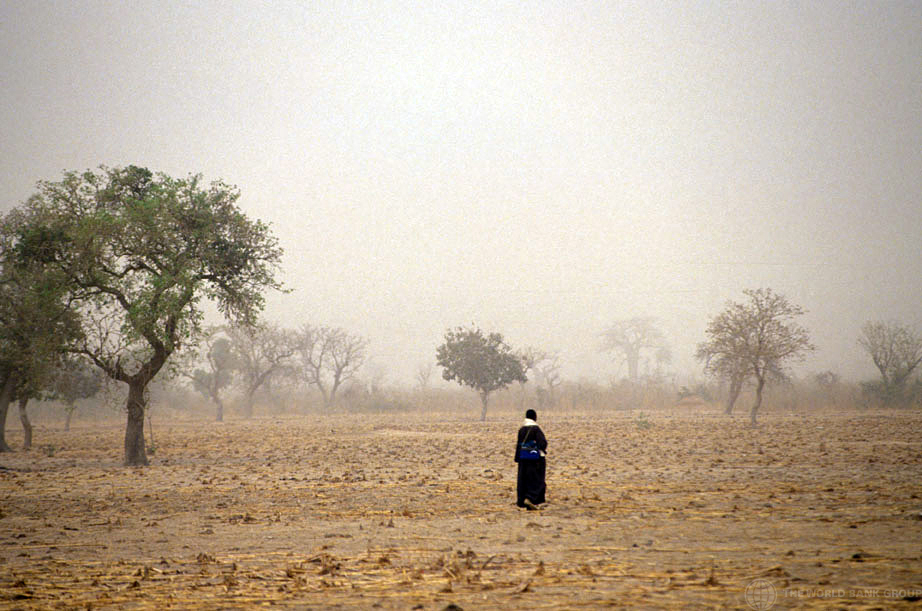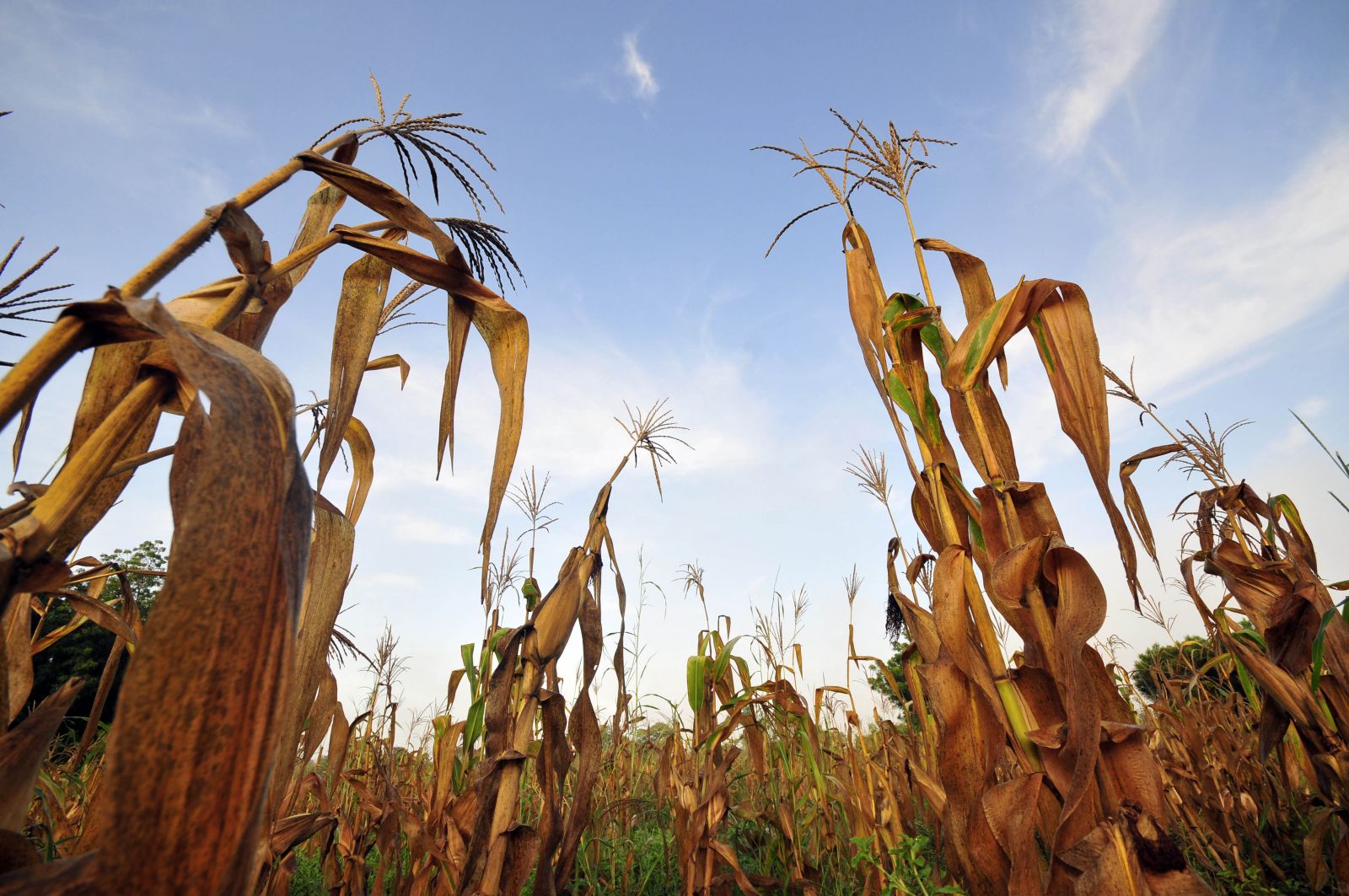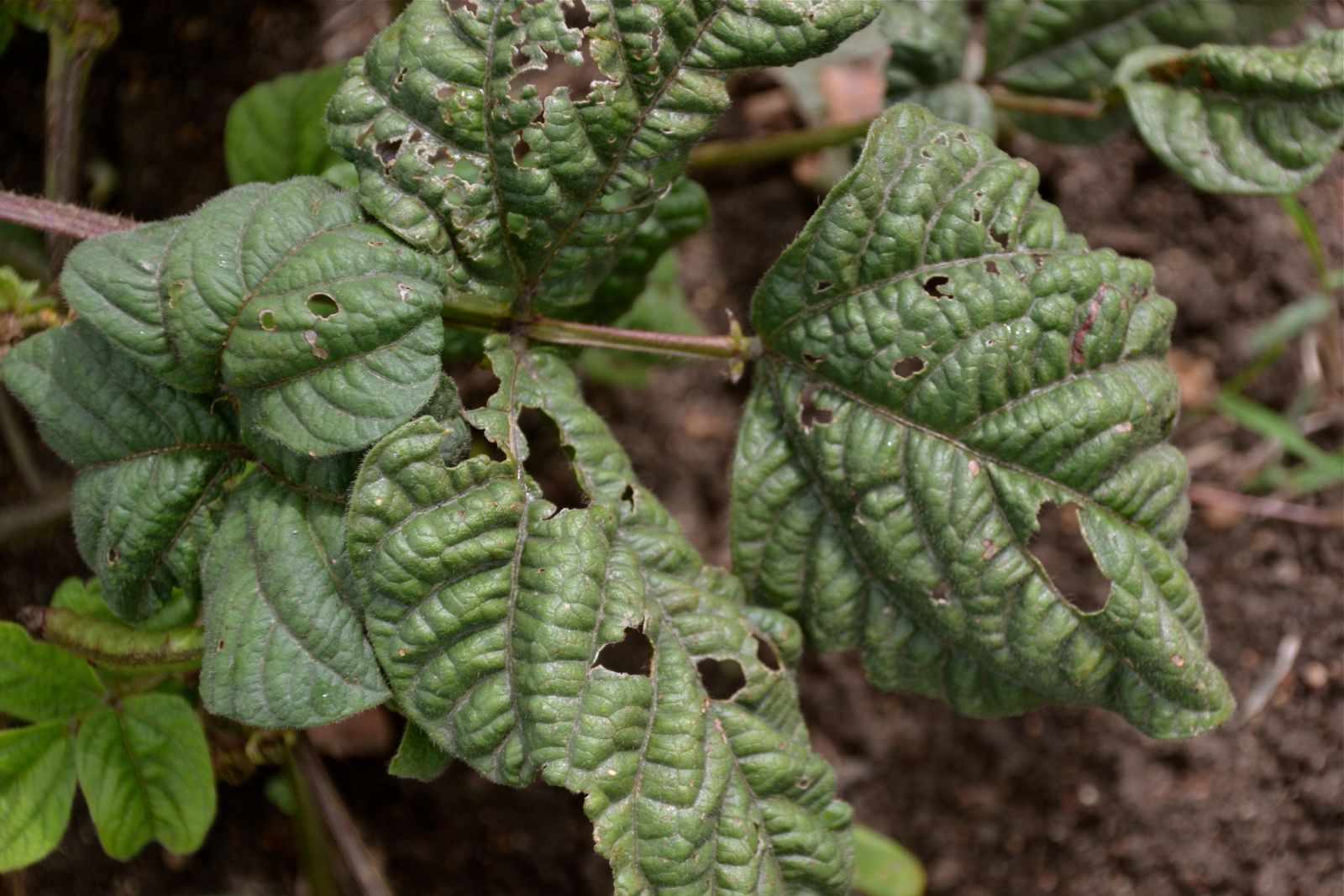One major
challenge right now is to understand how to tackle the uncertainty around
projecting variability and changes. This needs to be overcome, while
strengthening the confidence in projecting climate extreme events and their
magnitude. The fact that this is a highly complex and challenging area, with a
lot of uncertainty, is likely the reason to why research hasn’t really
progressed.

PREDICTION
OF EXTREME CLIMATE EVENTS AND THEIR LONG-TERM EFFECTS IS AN EXTREMELY COMPLEX
FIELD. PHOTO: WORLD BANK
What
do we know and what are we still searching for?
“What we still need to know is, how will changes in climate variability play out, i.e. will annual rainfall amounts become increasingly erratic, or will there be more extreme heat stress days? And the second is, how will increasingly erratic rainfall or more heat stress days affect crops and livestock? We know little about the first, and through physiology and modelling a few things about the second and not much if anything about how these things interact with each other,” says Philip Thornton.
”One major and immediate challenge is to use the information we do have, about climate variability and its impacts, to help us better understand extreme events. Our recent work for the IPCC identified extreme events as a major risk factor for agriculture under climate change," says Andy Challinor co-author of the review, as well as co-author to the chapter “Food Security and Food Production Systems”, included in the recently released IPCC report “Climate Change 2014: Impacts, Adaptation, and Vulnerability”.
“What we still need to know is, how will changes in climate variability play out, i.e. will annual rainfall amounts become increasingly erratic, or will there be more extreme heat stress days? And the second is, how will increasingly erratic rainfall or more heat stress days affect crops and livestock? We know little about the first, and through physiology and modelling a few things about the second and not much if anything about how these things interact with each other,” says Philip Thornton.
”One major and immediate challenge is to use the information we do have, about climate variability and its impacts, to help us better understand extreme events. Our recent work for the IPCC identified extreme events as a major risk factor for agriculture under climate change," says Andy Challinor co-author of the review, as well as co-author to the chapter “Food Security and Food Production Systems”, included in the recently released IPCC report “Climate Change 2014: Impacts, Adaptation, and Vulnerability”.
The “Climate variability and vulnerability
to climate change” review, also put together by Polly Ericksen, from
the International Livestock Research Institute (ILRI) and Mario Herrero, Commonwealth
Scientific and Industrial Research Organisation (CSIRO), gives a solid
overview of some of the current insights on climate variability’s potential
impacts on food and biological as well as human systems while outlining where
more research is needed.
The
authors mention that we do know that shifts between new extreme high and low temperatures,
could impact how crops grow and under what timeframe. Earlier flowering and
maturity of several crops have been documented in recent decades, often
associated with higher temperature.
Also,
increases in maximum temperatures can lead to severe yield reductions and
reproductive failure in many crops, further affecting billions of people
depending on farming as their main livelihood and food source.

RESEARCH
DO INDICATE THAT CLIMATE VARIABILITY CAN REDUCE CROP YIELDS, FROM MAIZE TO
RICE, WORLDWIDE. BUT THERE IS STILL A LOT WE DON'T KNOW HOW. PHOTO: N. PALMER
(CIAT)
For
example each degree-day maize spend above 30°C can reduce yields by 1.7 percent
under drought conditions, and rice yields could be reduced by 90% with night
temperatures of 32 compared with 27 °C. But exactly how such changes in
variability will affect global crop production in the future is still unknown.
Crop response to changes in temperature and photo period (length of day and
night) at supra-optimal temperatures is not well understood either.
Climate
variability and extreme events can also be important for yield quality. Protein content of
wheat grain has been shown to respond to changes in the mean and variability of
temperature and rainfall, specifically, high-temperature extremes during
grain-filling can affect the protein content of wheat grain.
There is
still much to be learned related to how crop quality might change as it is affected
by new extreme temperature changes. Not taking quality into account could
negatively impact human and livestock nutrition and health.
Unruly
precipitation could have huge negative impacts
As
precipitation may become more intense but less frequent and in some places
bring about longer dry spells, flash floods and runoff are more likely to
increase, which might result in increased soil erosion and diminish soil
moisture, both impacting food production and livelihoods.
Changed
precipitation might also impact spread and incidence of malaria, cholera and
dengue fever, directly affecting millions of people in tropical regions. The
linkages between variability in precipitation and its effects on biological
system need to be further investigated.
Changes
in climate variability and in the frequency of extreme events may have
substantial impacts on the prevalence and distribution of pests, weeds, and
crop and livestock diseases, including livestock productivity and growth, but
how the effects of future changes in climate variability impact these areas are
not well understood.

LITTLE
IS KNOWN ON HOW CLIMATE VARIABILITY WILL AFFECT OCCURANCE OF PESTS AND
DISEASES.IN THE PHOTO: RED STRIGA ON GREEN GRAMS. PHOTO: C.SCHUBERT
(CCAFS)
Even
if we don’t have all the answers, putting off adaptation is not an option any
longer!
Even if we have limited information and data as well as predictive capability, we cannot let that hinder us from adapting to climate change. Putting off adaptation for the future is not an option any longer. In the light of this regret-free approach towards climate adaptation, the review includes five areas that need increased attention if we are to successfully address the above-mentioned environmental, health and food security challenges:
Even if we have limited information and data as well as predictive capability, we cannot let that hinder us from adapting to climate change. Putting off adaptation for the future is not an option any longer. In the light of this regret-free approach towards climate adaptation, the review includes five areas that need increased attention if we are to successfully address the above-mentioned environmental, health and food security challenges:
·
Through a re-prioritized research agenda, ensure that the
knowledge and data gaps around the effects of climate variability and extreme
events on biological systems are addressed.
· Improve available impact models, especially on crops and livestock, at all scales.
· Improve the monitoring of local conditions, to improve our understanding and models that will help guide effective adaptation. Improved models would also help feed in important data to yield early-warning systems and locally appropriate indices for weather-based crop and livestock insurance schemes.
· Strengthen efforts being made to adapting biological and food systems to the increasingly variable climate and to increasingly frequent extreme events.
· Generate synergies and improve the communication between scientists and decision makers, as well as between natural and social scientists. There is a great deal that can be done on the co-generation of information and its communication in appropriate ways, and in engaging meaningfully with decision makers at local and national policy levels.
Download article: Thornton P, Ericksen PJ, Herrero M, Challinor AJ. 2014. Climate variability and vulnerability to climate change: a review. Global Change Biology·
· Improve available impact models, especially on crops and livestock, at all scales.
· Improve the monitoring of local conditions, to improve our understanding and models that will help guide effective adaptation. Improved models would also help feed in important data to yield early-warning systems and locally appropriate indices for weather-based crop and livestock insurance schemes.
· Strengthen efforts being made to adapting biological and food systems to the increasingly variable climate and to increasingly frequent extreme events.
· Generate synergies and improve the communication between scientists and decision makers, as well as between natural and social scientists. There is a great deal that can be done on the co-generation of information and its communication in appropriate ways, and in engaging meaningfully with decision makers at local and national policy levels.
Download article: Thornton P, Ericksen PJ, Herrero M, Challinor AJ. 2014. Climate variability and vulnerability to climate change: a review. Global Change Biology·
No comments:
Post a Comment